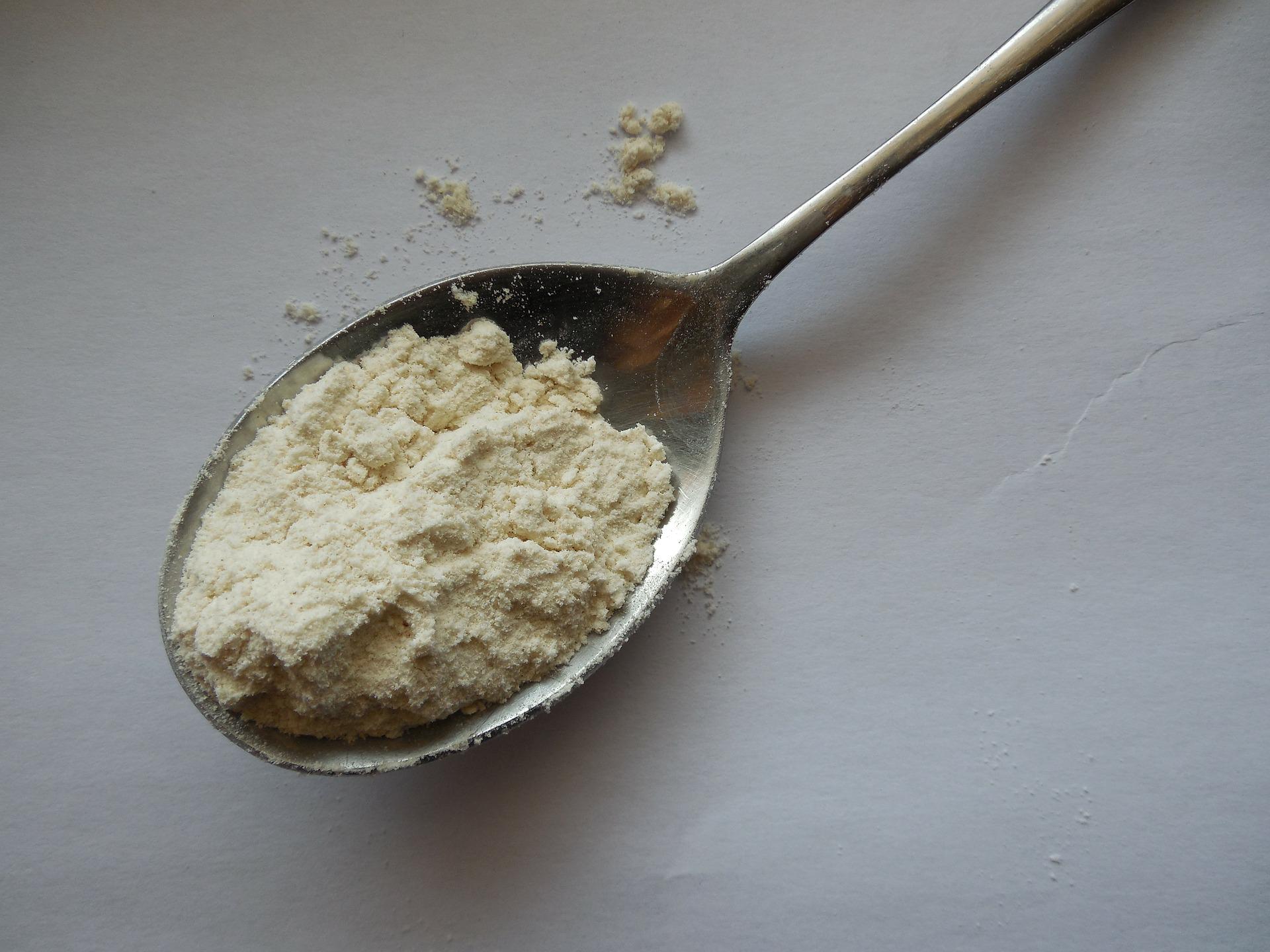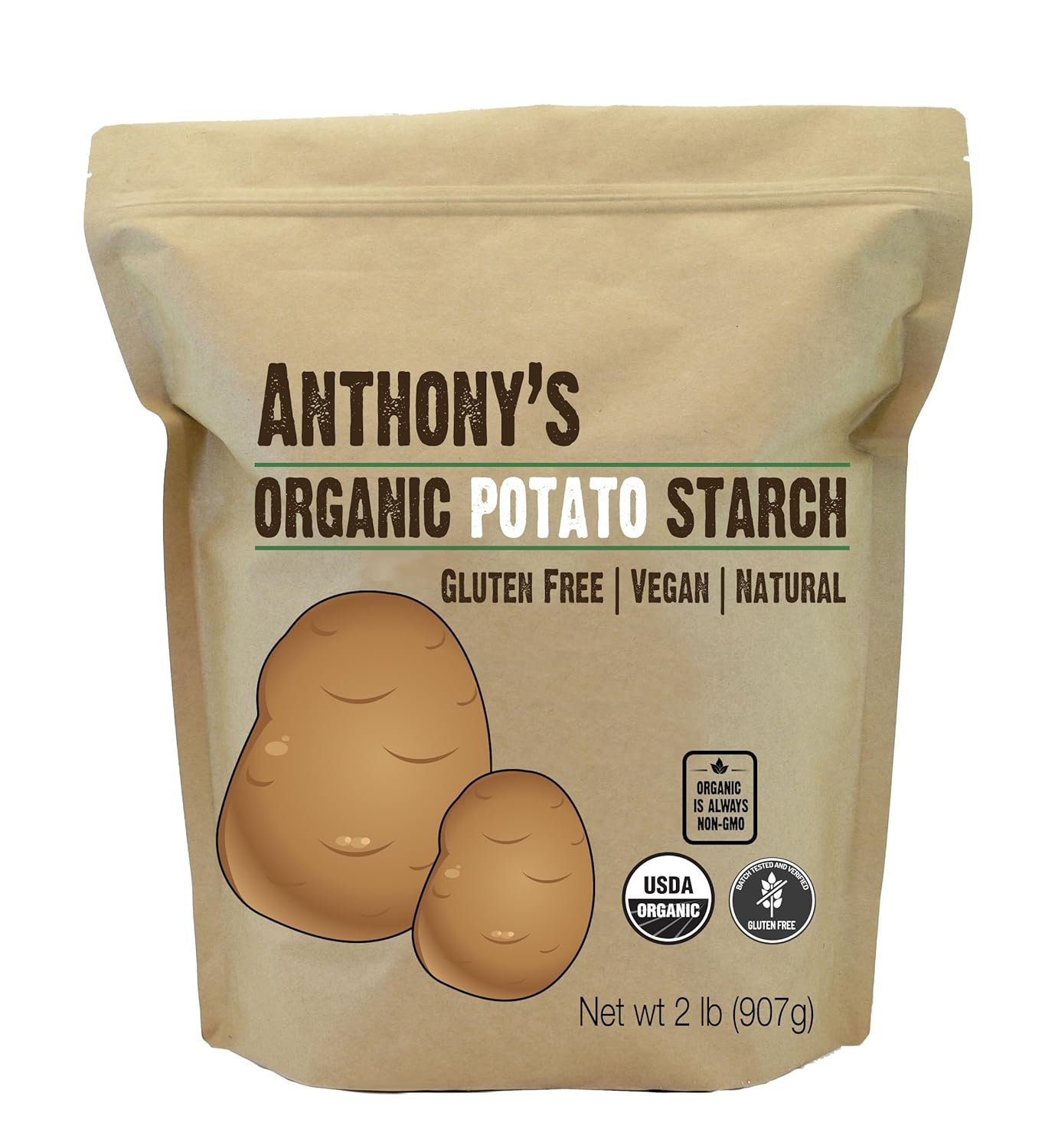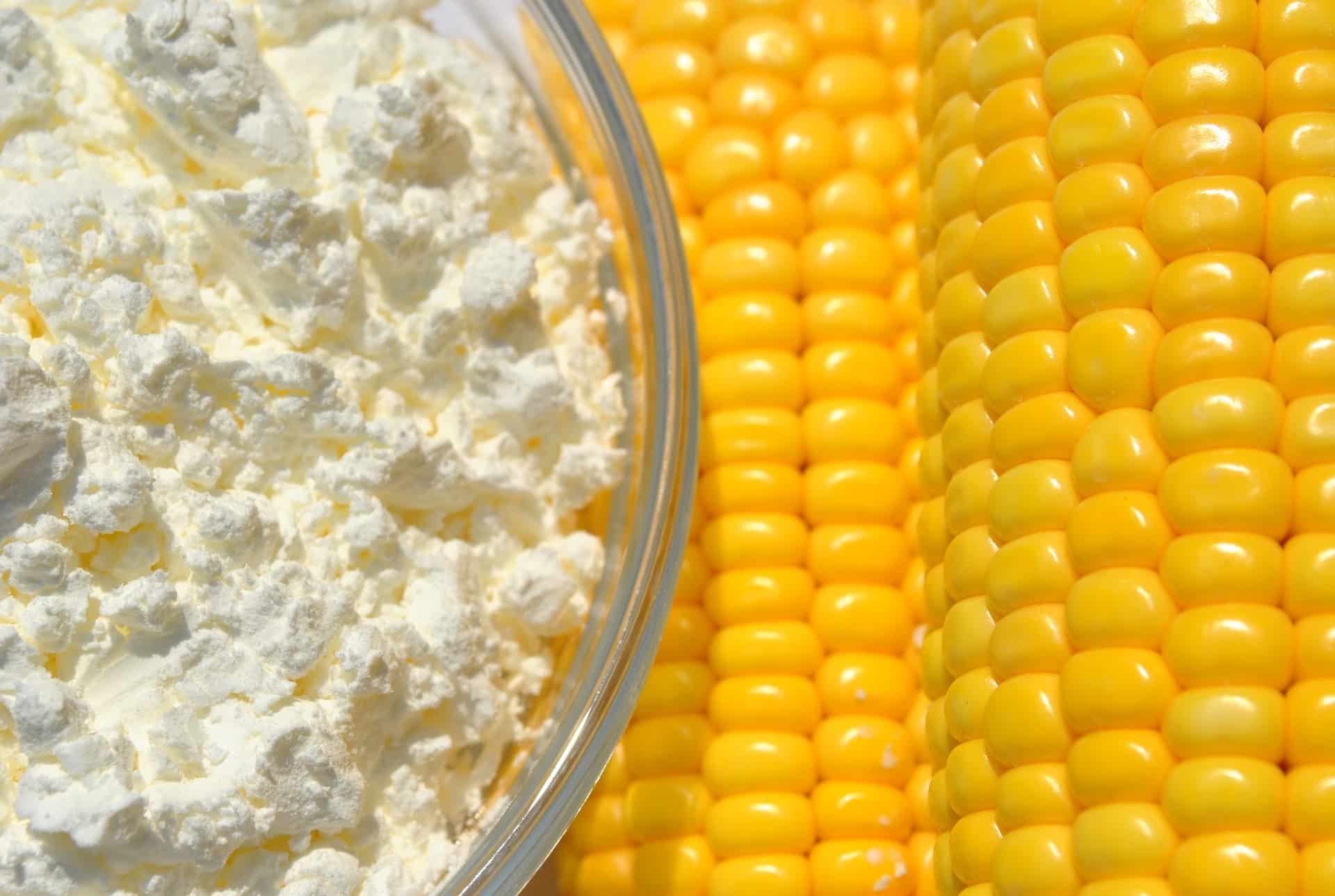Updated on April 9th, 2023
Cornstarch and cornflour are made from corn, although they have different nutritional profiles, tastes, and applications. Maize flour is a finely powdered powder made from intact corn kernels in the United States. On the other hand, cornstarch is a fine powder manufactured solely from the starchy component of corn. Due to their different nutritional levels and processing processes, they have varied culinary purposes. Furthermore, the names for each differ in different parts of the world.

Rice flour, arrowroot starch, potato starch, tapioca starch, and xanthan gum are excellent substitutes. They may not thicken as well as wheat flour, though, and you should only use them in little amounts at a time; be sure to read the recipe carefully to see if they will work. Here are some more cornflour alternatives.
What are Some Substitutes for Cornstarch?
-
Rice Flour

Rice flour can be used as a substitute for corn flour if you can’t locate it in your local grocery shop. Although rice flour is not gluten-free, it works just as well as cornstarch in thickening liquids. It can be used in any recipe that calls for cornstarch. In most recipes, rice flour can be used in place of cornstarch in a 1:1 ratio. If rice flour is too thick for a recipe, tapioca flour can be used instead. This flavourless starch derives from a South American root vegetable. On the other hand, boiling tapioca will result in a stringy thickening liquid.
Rice flour can be used in baking recipes to get the same results as cornstarch or other starches. This gluten-free alternative is perfect for those who avoid or are sensitive to corn and wheat ingredients. However, remember that it’s best to use it in modest amounts – as little as 10% of your ordinary flour. Cornmeal or potato starch can be used as a substitute for corn flour, and just keep in mind that the behaviour of these two flours differs slightly.
-
Arrowroot starch

If you’re looking for a gluten-free substitute for corn flour, arrowroot starch is a good option. Without the use of gluten, it can thicken sauces and custards. Arrowroot also holds up well to freezing, whereas corn-starch-thickened mixes disintegrate when frozen. However, you should avoid using arrowroot in dairy dishes because the outcome will be a slimy texture.
Arrowroot is gluten-free, grain-free, soy-free, and vegan-friendly, in addition to being gluten-free. Maize flour has become a popular solution for many people looking for alternatives to corn flour. There are a variety of arrowroot starch alternatives on the market. In recipes, it can be substituted for potato flour, all-purpose flour, or even desserts. Another plant-based alternative to maize flour is psyllium husk.
-
Potato starch

Using potato starch instead of maize flour has several advantages. One of these is its ability to withstand high temperatures, ideal for cooking. Unlike cornstarch, which thickens rapidly at high temperatures, potato starch can withstand high temperatures while continuing to thicken. It can be used to thicken sauces and baked goods without losing its thickening ability. It’s a wonderful choice for preparing potato-based batters and other meals because of this.
-
Tapioca starch

Cornstarch is not widely available in supermarkets, although it can be bought online or at niche health food stores. It has qualities comparable to maize starch, except it has a lower viscosity after cooking out. It’s simpler to dissolve in some food systems, although it thickens more quickly than corn starch. Tapioca pearls can also be used as an alternative.
-
Sorghum flour

Sorghum flour is a gluten-free flour alternative that’s also high in B vitamins, copper, and iron. The unbleached variety is still full of vitamins and minerals, although losing some nutritional value when processed. If you don’t have sorghum flour on hand, almond flour, quinoa flour, and tapioca flour are suitable substitutes.
Sorghum flour is a popular wheat-flour alternative because of its high nutritional content. It’s gluten-free and does not affect blood sugar levels, unlike cornstarch. If you’re sensitive to soy or other gluten-containing grains, soy flour is a good alternative. Soy flour gives protein to baked foods while posing no health risks.
What’s the Difference Between Corn Flour and Cornstarch?
-
Processing
Corn is used to making cornflour and cornstarch. Maize flour is made by pulverizing whole corn kernels into a fine powder. As a result, it has protein, fibre, starch, and vitamins and minerals present in whole corn. It’s usually yellow in colour. Cornstarch, on the other hand, is more refined, as it is created by removing the protein and fibre from the maize kernel, leaving only the starchy endosperm. After that, it’s ground into a white powder. Compared to maize flour, cornstarch contains no B vitamins and even fewer essential nutrients.
-
Flavor Differences
Corn flour has an earthy, sweet flavour similar to corn, and it can be used in place of or in addition to wheat flour in bread, pancakes, waffles, and pastries to give them a corn flavour.
Corn flour is often confused with cornmeal, a coarser crushed flour formed from corn kernels made in the United States. When compared to corn flour, cornmeal has a stronger corn flavour. On the other hand, cornstarch is mainly flavourless and hence adds texture rather than flavour. It’s a flavourless powder that’s typically used to thicken sauces.
-
Confusing naming practices
Cornstarch is commonly referred to as cornflour in the United Kingdom, Israel, Ireland, and other nations. Meanwhile, corn flour may be referred to as cornmeal. As a result, outside-of-the-US recipes and cooking instructions may call for corn flour when they truly mean cornstarch or cornmeal when they mean corn flour.
If you’re not sure which product to use in a dish, attempt to figure out where the recipe came from. See how the corn product is used in the recipe instead. Corn flour is probably the greatest option if you want to utilise it in the same way you would wheat flour.
How do you Use Corn Flour to Thicken?
There are two methods to use flour:
Before browning the meat, dust it with flour. As a stew simmer, the flour aids in thickening it.
Make a slurry with a teaspoon of flour and a splash of cold water, then swirl it into the stew while it cooks. Dry flour should not be added to the stew directly since it will clump together. Bring the stew back to a boil after adding the slurry. This will eliminate the flour flavour while allowing the starch to swell. Bring to a boil one teaspoon at a time before adding more.
Cornflour is a gluten-free thickening that works well in a variety of applications. Because it has a more gelatinous texture, only use a spoonful at a time, or your sauce will get goopy. Cooking your stew for a long time can break down the starch, causing your stew to thin out again. Use cornstarch to thicken it at the end of cooking.
Mix one teaspoon cornflour with a tablespoon of room temperature water and add to your stew. Then bring to a boil and cook until desired thickness is reached.
Can I Use Cornflour Instead of Cornstarch in Cake Flour?
When using cornstarch in a recipe, it’s ideal to use it when the ingredients are at room temperature. The heat might produce undesirable clumping when cornstarch is added to a heated mixture. It’s best to produce a slurry first before adding any starch to a dish. Simply combine cornstarch with a cold liquid, such as water to form a slurry. This combination will turn into a paste-like consistency, which you can use in your recipe. If you use this slurry approach, the cornstarch will be evenly dispersed throughout the mixture and will not be broken down by the heat. Cornstarch-based sauces and soups are not suggested for freezing.
When cornstarch is frozen, the molecules in the starch break down, and the liquid does not have the same texture when it is thawed. This ensures that all the molecules are intact and the starch is spread uniformly. When you add cornstarch to your baked products, examine them as if they were a soup.
When adding cornstarch to a dessert batter, it should first be made into a slurry, just like making a soup or pudding. Have you gotten your batter to the right consistency? If not, a pinch of cornstarch may be required. Bake your pie as usual once your dough is perfect. What’s the end result? Desserts that are light, fluffy, and delectable!
For What Purposes Corn Starch can be Used?
-
Make Fluffier Omelets
Are you a fan of light and fluffy omelettes? If that’s the case, you can make it happen with cornstarch. Simply add a pinch of cornstarch to the egg whites before beating them. Then cook your omelette as usual for a wonderful, fluffy result.
-
Make a Milk Bath at Home
To relieve the tension of a long day, soak in a calming milk bath with cornstarch. Milk baths also soften and soothe the skin, and they also have a wonderful aroma. Check out this simple milk bath recipe, which calls for 1/2 cup cornstarch, 2 cups whole powdered milk, 1/4 cup baking soda, and a few drops of your favourite essential oil.
-
Remove Grease Stains
Cornstarch can also aid in the removal of stubborn oil stains. To begin, dab the discoloration using a clean cloth, and then apply cornstarch to each side of the stain and leave it on for 10 minutes to absorb the grease. Next, sift the remaining cornstarch into the sink. Finally, dab white vinegar on any remaining stains with a clean cloth and wash as usual.
-
Use it on Your Skin
Some people use cornstarch to avoid pimples on their skin, and it’s also sometimes used to lighten acne scars. Combine 1 tablespoon cornstarch, 1 teaspoon ground coffee, 1 teaspoon ground oats, and 3 tablespoons coconut oil to make your own cornstarch-based skin treatment. After cleansing your skin, apply the mask to your face and leave it to dry for around five minutes. Then it’s time to wash.
Conclusion
Cornstarch is a fine, white powder created from the starchy section of a corn kernel, whereas corn flour is a yellow powder made from finely crushed, dried maize. Depending on where you live, they may go by different names. Cornstarch is mostly used as a thickening, whereas corn flour is utilised similarly to other flours.
